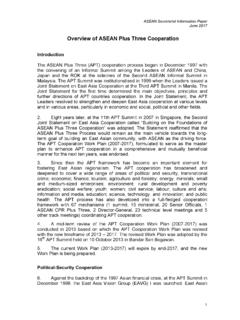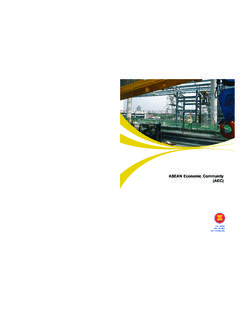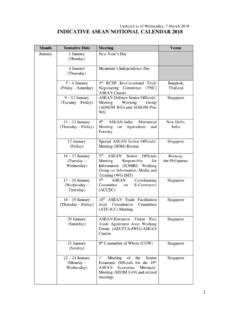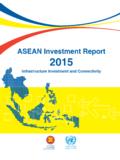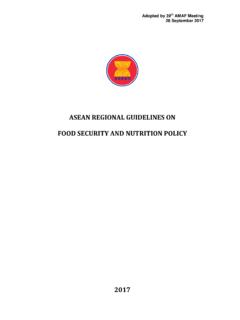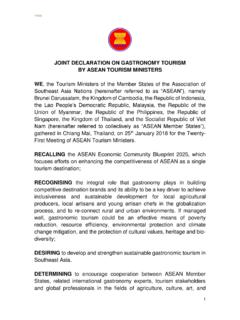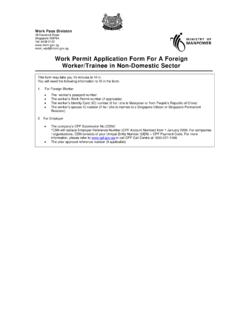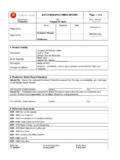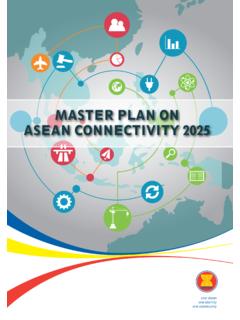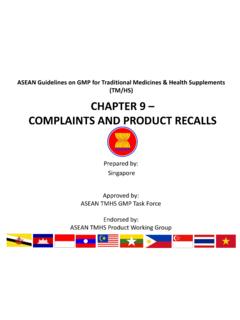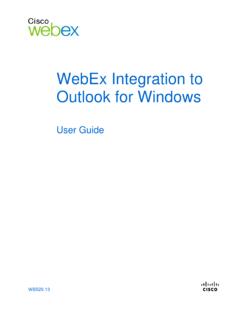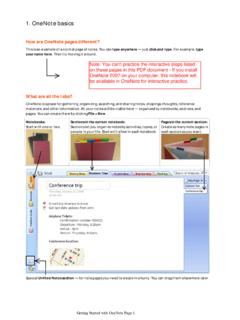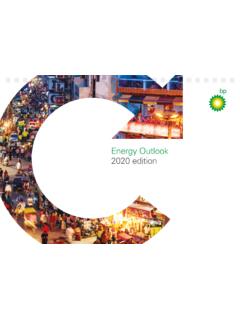Transcription of FINAL ASEAN OUTLOOK ON THE INDO-PACIFIC I. …
1 FINAL . ASEAN OUTLOOK ON THE INDO-PACIFIC . I. BACKGROUND AND RATIONALE. 1. The Asia-Pacific and Indian Ocean regions are amongst the most dynamic in the world as well as centers of economic growth for decades. As a result, these regions continue to experience geopolitical and geostrategic shifts. These shifts present opportunities as well as challenges. On the one hand, the economic growth of the region opens up possibilities of cooperation to alleviate poverty and elevate living standards of millions of people. On the other hand, the rise of material powers, economic and military, requires avoiding the deepening of mistrust, miscalculation, and patterns of behavior based on a zero-sum game. 2. Southeast Asia lies in the center of these dynamic regions and is a very important conduit and portal to the same. Therefore, it is in the interest of ASEAN to lead the shaping of their economic and security architecture and ensure that such dynamics will continue to bring about peace, security, stability and prosperity for the peoples in the Southeast Asia as well as in the wider Asia-Pacific and Indian Ocean regions or the INDO-PACIFIC .
2 3. ASEAN , which for decades has been engaging in the development of an inclusive regional architecture, needs to consistently come up with its collective leadership in forging and shaping the vision for closer cooperation in the INDO-PACIFIC and to continue to maintain its central role in the evolving regional architecture in Southeast Asia and its surrounding regions. ASEAN also needs to continue being an honest broker within the strategic environment of competing interests. 4. Against this backdrop, ASEAN Leaders have agreed to further discuss an initiative that reinforces the ASEAN -centered regional architecture, namely, ASEAN OUTLOOK on the INDO-PACIFIC . This OUTLOOK is not aimed at creating new mechanisms or replacing existing ones; rather, it is an OUTLOOK intended to enhance ASEAN 's Community building process and to strengthen and give new momentum for existing ASEAN -led mechanisms to better face challenges and seize opportunities arising from the current and future regional and global environments.
3 Moreover, the OUTLOOK is intended to be inclusive in terms of ideas and proposals. 5. ASEAN OUTLOOK on the INDO-PACIFIC envisages ASEAN Centrality as the underlying principle for promoting cooperation in the INDO-PACIFIC region, with ASEAN -led mechanisms, such as the East Asia Summit (EAS), as platforms for dialogue and implementation of the Indo Pacific cooperation, while preserving their formats. Furthermore, ASEAN may also seek to develop, where appropriate, cooperation with other regional and sub-regional mechanisms in the Asia-Pacific and Indian Ocean regions on specific areas of common interests to complement the relevant initiatives. 2. II. ASEAN OUTLOOK ON THE INDO-PACIFIC . 6. Consistent with decades of ASEAN 's role in developing and shaping regional architectures in Southeast Asia and beyond, and with ASEAN 's norms and principles as contained in the ASEAN Charter and other relevant ASEAN documents, ASEAN OUTLOOK on the Indo- Pacific envisioned by ASEAN consists of the following key elements: o A perspective of viewing the Asia-Pacific and Indian Ocean regions, not as contiguous territorial spaces but as a closely integrated and interconnected region, with ASEAN .
4 Playing a central and strategic role;. o An INDO-PACIFIC region of dialogue and cooperation instead of rivalry;. o An INDO-PACIFIC region of development and prosperity for all;. o The importance of the maritime domain and perspective in the evolving regional architecture. III. OBJECTIVES. 7. This ASEAN OUTLOOK on the INDO-PACIFIC should support and provide ballast for the current dynamism in the INDO-PACIFIC region, which should be viewed from the perspective, of encouraging progress. As such, it should also provide added value to the existing regional arrangements. Therefore, the said ASEAN OUTLOOK on the INDO-PACIFIC is aimed at: (1). offering an OUTLOOK to guide cooperation in the region; (2) helping to promote an enabling environment for peace, stability and prosperity in the region in addressing common challenges, upholding the rules-based regional architecture, and promoting closer economic cooperation, and thus strengthen confidence and trust; (3) enhancing ASEAN 's Community building process and further strengthening the existing ASEAN -led mechanisms, such as the EAS; and (4) implementing existing and exploring other ASEAN .
5 Priority areas of cooperation, including maritime cooperation, connectivity, the Sustainable Development Goals (SDGs), and economic and other possible areas of cooperation. 8. ASEAN OUTLOOK on the INDO-PACIFIC involves the further strengthening and optimization of ASEAN -led mechanisms, including the East Asia Summit (EAS), the ASEAN Regional Forum (ARF), the ASEAN Defence Ministers Meeting Plus (ADMM-Plus), the Expanded ASEAN Maritime Forum (EAMF) and others such as the relevant ASEAN Plus One mechanisms. 9. ASEAN OUTLOOK on the INDO-PACIFIC is meant to contribute to the maintenance of peace, freedom, and prosperity. IV. PRINCIPLES. 10. ASEAN OUTLOOK on the INDO-PACIFIC is based on the principles of strengthening ASEAN . Centrality, openness, transparency, inclusivity, a rules-based framework, good governance, respect for sovereignty, non-intervention, complementarity with existing cooperation frameworks, equality, mutual respect, mutual trust, mutual benefit and respect for international law, such as UN Charter, the 1982 UN Convention on the Law of the Sea, and 3.
6 Other relevant UN treaties and conventions, the ASEAN Charter and various ASEAN . treaties and agreements and the EAS Principles for Mutually Beneficial Relations (2011). 11. Recognizing the continuing importance, relevance and positive contributions of the Treaty of Amity and Cooperation in Southeast Asia (TAC) to sustaining peace and stability in the region for over 40 years, ASEAN OUTLOOK on the INDO-PACIFIC would be guided by the purposes and principles contained in the TAC, which, among others, encompass peaceful settlement of disputes, renunciation of the threat or use of force and promotion of rule of law, with a view to further promoting amity and cooperation among countries in the Indo- Pacific region. 12. ASEAN OUTLOOK on the INDO-PACIFIC will, at the same time, help to generate momentum for building strategic trust and win-win cooperation in the region, which would be further reinforced by ASEAN reaffirming those purposes and principles of the TAC and promoting their application in the conduct of relations between states in a wider INDO-PACIFIC region, including through an appropriate ASEAN document.
7 V. AREAS OF COOPERATION. 13. In order to realize the key elements of ASEAN OUTLOOK on the INDO-PACIFIC , ASEAN will undertake cooperation in a broad range of areas, including: Maritime Cooperation 14. The existing and arising geopolitical challenges facing countries in the region also revolve around maritime issues such as unresolved maritime disputes that have the potential for open conflict. In addition, unsustainable exploitation of maritime resources and maritime pollution have also increasingly become major problems. There is a need to prevent, manage and eventually resolve these issues in a more focused, peaceful and comprehensive way. 15. Areas of maritime cooperation, in accordance with universally recognised principles of international law including the 1982 United Nations Convention on the Law of the Sea, may include the further enhancement of: o cooperation for peaceful settlement of disputes; promoting maritime safety and security, and freedom of navigation and overflight; addressing transnational crimes, including trafficking in persons or of illicit drugs, sea piracy, robbery and armed robbery against ships at sea; etc.
8 O cooperation for sustainable management of marine resources; to continue to promote maritime connectivity; to protect livelihood of coastal communities and to support small-scale fishing communities; to develop blue economy and to promote maritime commerce, etc. o cooperation to address marine pollution, sea-level rise, marine debris, preservation and protection of the marine environment and biodiversity; promoting green shipping, etc. o technical cooperation in marine science collaboration; research and development;. sharing of experience and best practices, capacity-building, managing marine hazards, marine debris, raising awareness on marine and ocean-related issues, etc. 4. Connectivity 16. The second area of cooperation is connecting the connectivities. The existing and future connectivity initiatives in the INDO-PACIFIC region should complement and support the existing Master Plan on ASEAN Connectivity (MPAC) 2025.
9 The ASEAN vision on Connectivity, that is to achieve a seamlessly and comprehensively connected and integrated region that will promote competitiveness, inclusiveness, and a greater sense of community, as well as the Declaration on the 6th East Asia Summit on ASEAN Connectivity should guide the ASEAN OUTLOOK on connectivity in INDO-PACIFIC region. The increasing integration and interconnection among Indian Ocean and Pacific Ocean countries require investments and efforts to build connectivity infrastructures, including physical, institutional and people-to-people linkages. Environmental and ecological impacts and considerations must be taken into account to ascertain the sustainability of such initiatives in the long term. 17. Connecting the connectivities may include: o Exploring key priority area of cooperation to reinforce the existing MPAC 2025 and promote prosperity and development in the INDO-PACIFIC region.
10 O Developing a regional public-private partnership (PPP) development agenda to mobilize resources for connectivity projects, including infrastructure projects in Indo- Pacific region;. o Exploring potential synergies with sub-regional frameworks, such as, IORA, BIMSTEC, BIMP-EAGA, Mekong subregional cooperation frameworks, including ACMECS, etc.;. o Working towards the establishment of a Seamless ASEAN Sky, with ASEAN airspace as a seamless block of airspaces with harmonised and interoperable procedures and operations, to increase air traffic management capacity and efficiency while enhancing safety;. o People-to-people connectivity, through cooperation, collaboration and exchanges between the academe and business, etc.; and o Addressing challenges of rapid urbanization through the ASEAN Smart Cities Network (ASCN) initiative. UN Sustainable Development Goals 2030.
